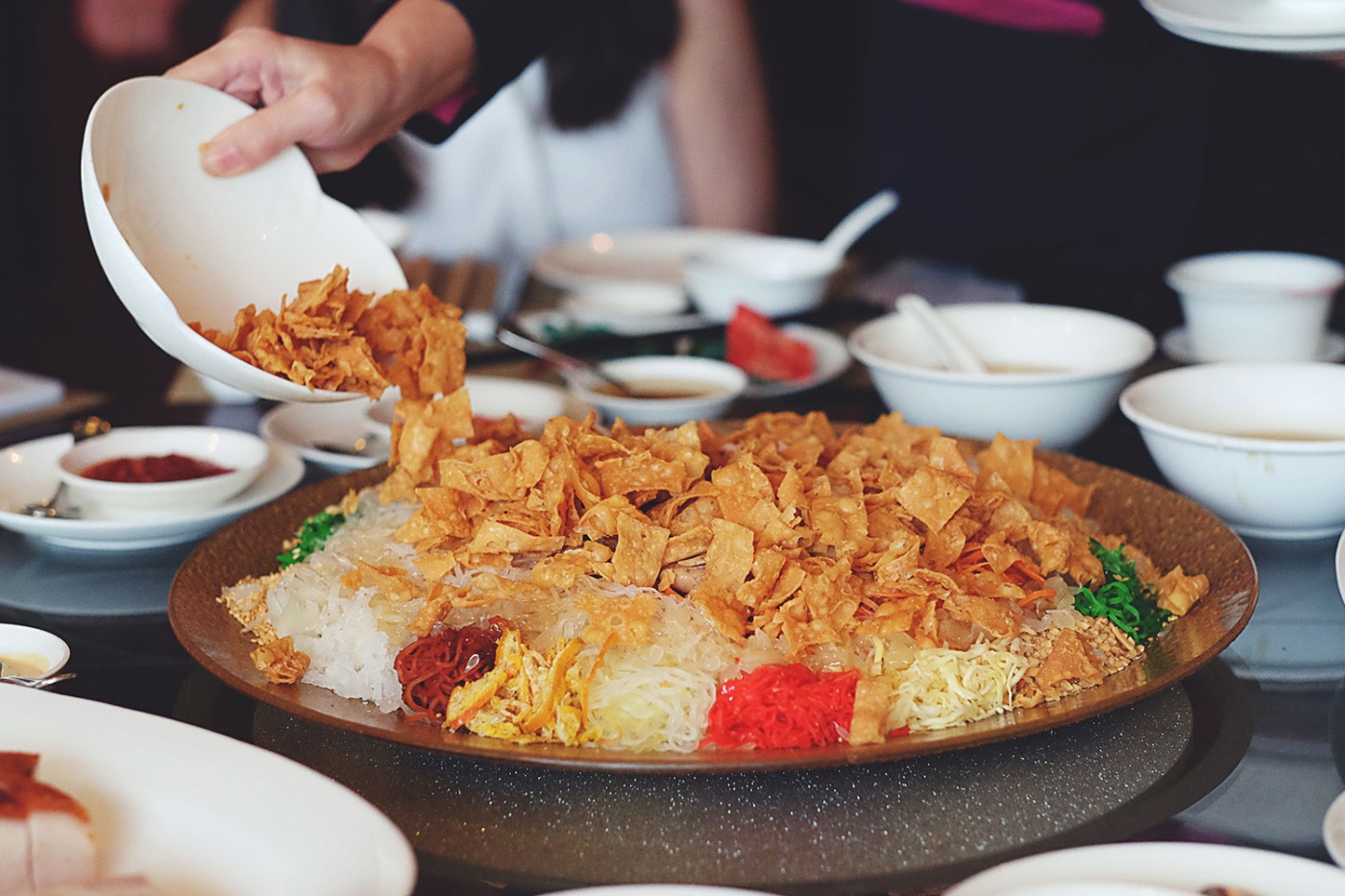Want to get lucky this Chinese New Year? You might be eating it all wrong.
Superstitions are beliefs that are often tied in to the cultural milieu of a nation. Whilst some of these may or may not have religious connotations, interestingly enough, these often spill over into the context of food. Starting today, across most of Asia, millions will be holding a lavish feast to usher in the lunar new year, which falls on a Friday, February 16 this year. In China, it is a technicolour explosion of light and sounds, with melodic beating of the drums, ear-splitting firecrackers, festive red lanterns, and relatives decked out in their brightest new gear as they participate in bountiful celebrations intent on seeing out the old year and ushering in the new one.
Steeped in thousands of years worth of culture, it’s almost hard to believe that some Chinese New Year foods are founded not by tradition but by nature of edible puns and homophones. Trust the Chinese to be cheesy, yes? However, applaud or chide, these eating rituals have been followed through ages with or without logic. Here are some foods you should include on your dining table, that could make or break you in 2018.
Fish, or 魚
Based on the Chinese saying “年年有余” which translates to “may the year end with ample surplus”. The character for prosperity, yu, is a homophone for the word “魚” hence the fish symbolising abundance and wealth. Before you get all excited and start shopping for a plump fillet of barramundi, stop. In the context of Chinese New Year, the fish should be prepared whole, in a simple representation of family unity. Whatever the method of preparation—steaming, frying, or baking—do make sure that the head and fin are still intact, as they represent a good beginning and a good end to the coming year.
Dumplings, or 餃子
Dumplings represent wealth and good fortune because they are shaped like an old-fashioned gold ingot. Legend has it that the more dumplings you consume during the New Year celebration, the more money will wind up in your pocket. Wheat intolerance takes a back seat in this strive for wealth.
Spring Rolls, or 春卷
Synonymous with Chinese Takeout, these crisp golden rolls take their name from the holiday for which they are traditionally prepared for: the Spring Festival. The burnished gold of the crusts hiding hidden treasures of tender shredded carrot, shiitake mushrooms, cabbage, bean sprouts and pork. The addictive snack rolled to resemble gold bars which (you guessed it!) represent wealth and prosperity in the year to come.
Longevity Noodles, or 长寿面
Literally translating to “long-life noodles”, these two-foot-long noodles also make a guest appearance at birthdays in addition to Chinese New Year. Symbolising longevity, diners or chefs should avoid cutting the noodle strands so as to preserve their length. Think of it as a Chinese equivalent of a candle-lit birthday cake.
Sweet Rice Cake, or 年糕
The familiar image of a New Year Sweet Rice Cake is a welcome sight during Chinese New Year. Considered to be good luck, the Cantonese term for this sweet treat is a homonym for “higher year”. Eating it is supposed to abet the process of climbing the social ladder in the coming year. Need a higher income job? Want to gain popularity? Perhaps, more Instagram followers? “Nian Gao” is the dish for you.
Mandarin Oranges, or 桔子
There is some amount of realism tied to this practice. As Chinese New Year usually falls at the tail end of winter, fruits available tend to be limited to those that thrive in the colder months. Cue, oranges and tangerines. Prized for their vibrant shades of gold and their round shape, a pair is crucial during visitations, which represent wealth and good fortune.
Pineapple Tarts, or “Ong Lai”
A Chinese New Year tradition with roots in Singapore is the gifting of Pineapple Tarts. Sure, the serving of sweet desserts is often encouraged over the festive period as it signifies sweeter things to come. But, pineapple tarts are particularly ideal, (and not to mention, incredibly delicious). In Hokkien and Cantonese households, pineapple translates to “Ong Lai” which means “Prosperity Come”.
A lot of Singapore’s migrant history can be derived from the humble pineapple tart. Originating from South America, pineapples were first brought in by pioneer travellers during their expeditions. Later on, Peranakans successfully married pineapple jam with buttery pastry, and a seamless marriage was formed. If you are visiting an overseas friend during this period, do make sure to carry a jar of these golden ingots with you!
Yu Sheng, actuating in Lo-Hei (or the Prosperity Toss)
Yu Sheng started off as a Cantonese tradition where strips of raw fish are mixed with shredded vegetables and a slew of condiments. “魚生” interpreted as a homophone for “余升” which means an increase in abundance.
Whilst methods of consumption remain relatively tame in parts of China, the contemporary version of theatrical service with vigorous Lo Hei antics was created in the 1960s in Singapore and Malaysia. Before the tossing begins, the dish is assembled, usually by a matronly individual who adds the ingredients one at a time in a specific order, while reciting wishes of luck and prosperity associated with the names of the ingredients used. For instance, carrots “红萝卜”, 红 has a homophone in 鸿, referring to the wish “鸿运当头” meaning “good luck is approaching”. This euphemism is repeated through a variation of colourful ingredients from sesame seeds (生意兴隆) to white radish (风生水起 ), plum sauce (甜甜蜜蜜 ) to deep fried flour crisps (满地黄金). Once this part of the ritual is complete, diners stand around the table and toss the ingredients, with vigorous dexterity, whilst exchanging blessings of good fortune. It is popularly believed that the height of your toss reflects the diners’ growth in fortune.
We would highly recommend lining your tables with plastic sheets prior to this riotous activity.


